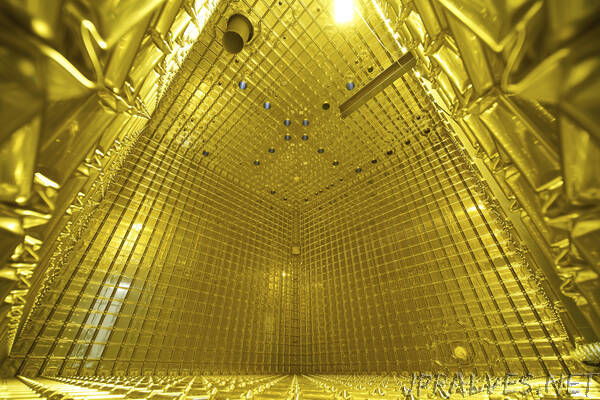
“The Laboratory deepens its collaboration with the US-based neutrino experiment with the provision of two enormous stainless-steel vessels for DUNE’s cutting-edge liquid-argon detectors
Neutrinos are tricky beasts. Alone among known fundamental particles, they suffer from an identity crisis – if it were possible to put them on a weighing scale, you would unpredictably measure one of three possible masses. As a result, the three neutrino “flavours” merge into each other as they race through space and matter, opening up the potential for matter–antimatter asymmetries relevant to open questions in cosmology. Neutrinos are today the subject of a vibrant worldwide research programme in particle physics, astrophysics and multi-messenger astronomy.
In an eye-catching example of international collaboration in particle physics, CERN has now agreed to produce a second cryostat for the detectors of the international Deep Underground Neutrino Experiment (DUNE) in the US. Cryostats are huge stainless-steel vessels that will eventually hold and cool 70 000 tonnes of liquid argon inside the DUNE experiment’s detectors. The large size and low temperatures of the cryostats needed for the DUNE detectors necessitated innovation in collaboration with the liquefied-natural-gas shipping industry. CERN had already committed to build the first of four DUNE cryostats. Following approval by the CERN Council, the Organization has now also agreed to provide a second.
The collaboration exploits CERN’s expertise with a technology that neutrino physicists have dreamed of deploying on such a scale for decades. Neutrinos are notoriously difficult to detect. They stream through matter with a minuscule chance of interacting. And when they do interact, it’s often with one of the least well understood objects in physics, the atomic nucleus, and a spray of particles and excitations emerges from the swirling mess of hadronic matter. To get enough of these ghostly particles to interact with nuclei in the first place, you need a dense target material; however, that is a terrible starting point for building a detector sensitive enough to reconstruct these sprays of particles in detail.
Former CERN Director-General and Nobel laureate Carlo Rubbia proposed a solution in 1977: neutrinos could interact in tanks of liquid argon, and electric fields could amplify tiny signals caused by the gentle ionisation of neighbouring argon atoms by charged particles created in the collision, allowing the event to be reconstructed like a three-dimensional photograph, with exquisite resolution that would be unprecedented for a neutrino experiment. Such a liquid-argon time-projection chamber was first realised on a large scale by the ICARUS experiment at Gran Sasso, which was built by INFN in Italy, refurbished at CERN and shipped to Fermilab’s short-baseline neutrino facility in 2017. Each DUNE detector module will be 20 times bigger. Work on these groundbreaking designs has been under way at CERN for several years already in the preparation and testing of two ProtoDUNE detectors, which have successfully demonstrated the operational principles of the technology.”
